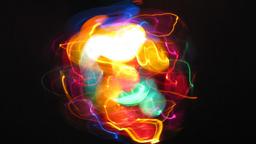
Light, Color, and EM Spectrum
Quiz by Melanie Meredith
Feel free to use or edit a copy
includes Teacher and Student dashboards
Measures 1 skill from
Track each student's skills and progress in your Mastery dashboards
- edit the questions
- save a copy for later
- start a class game
- automatically assign follow-up activities based on students’ scores
- assign as homework
- share a link with colleagues
- print as a bubble sheet
- Q1
Which best explains the relationship between sight, visible light, and the electromagnetic spectrum?
Visible light, light that humans can see, is a part of the electromagnetic spectrum.
Visible light, light that humans can see, makes up the entire electromagnetic spectrum.
Visible light, light that humans can see, moves faster than the rest of the electromagnetic spectrum.
Visible light, light that humans can see, moves more slowly than the rest of the electromagnetic spectrum.
45s6.P.1.2 - Q2
Which two items separate the wavelengths of light?
satellite and microwave
prism and water vapor
lightbulb and radio telescope
X-ray and the sun
45s6.P.1.2 - Q3
Which part of the electromagnetic spectrum can be observed as colors?
ultraviolet light
radio waves
visible light
gamma waves
45s6.P.1.2 - Q4
Suzanne is looking at an apple. Which best explains how she can see this object?
Light enters the eye before striking an object.
Light is absorbed by an object before it can reach the eye.
Light passes through an object before entering the eye.
Light reflects off of an object before entering the eye.
45s6.P.1.2 - Q5
The visible light spectrum can be subdivided according to
a range of colors.
a type of energy
the sizes of particles
the types of waves.
45s6.P.1.2 - Q6
How is the retina connected to the brain?
through the iris
through the lens
through the cornea
through the optic nerve
45s6.P.1.2 - Q7
What has most likely occurred if light travels into an object without bouncing off?
reflection
refraction
absorption
scattering
45s6.P.1.2 - Q8
Which statement best describes the relationship between the frequency and the wavelength of waves?
As wavelength changes, there is no change in frequency.
As frequency increases, the wavelength gets shorter.
As wavelength decreases, the frequency remains the same.
As frequency increases, the wavelength gets longer.
45s6.P.1.2 - Q9
Juan lays an object on a table in a well-lighted room. The object absorbs all visible light waves. What color object does Juan see?
violet
black
white
red
45s6.P.1.2 - Q10
Which is produced when light is refracted by a water drop?
a sound
a rainbow
a thunderstorm
a solar eclipse
45s6.P.1.2 - Q11
Where are the cones and rods located within the eye?
in the iris
in the cornea
in the sclera
in the retina
45s6.P.1.2 - Q12
When all the colors of the spectrum are combined, what will the human eye see?
red
blue
black
white
45s6.P.1.2 - Q13
Why do plant leaves appear green when exposed to sunlight?
because most of the light they absorb is green
because sunlight is made up of every color of light except green light
because most of the light they reflect is green
because sunlight is only made up of green light
45s6.P.1.2 - Q14
Which electromagnetic wave has the longest wavelength?
visible light
gamma ray
ultraviolet light
X-ray
45s6.P.1.2 - Q15
What is a function of the human eye’s retina?
to focus light
to permit entry of light into the eye
to detect colors
to control the size of the pupil
45s6.P.1.2